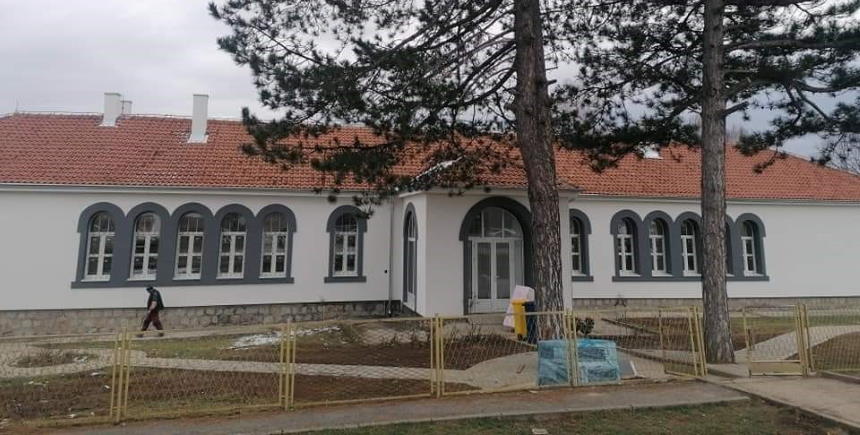
Photo: Jovan Živanović
Author: Ana Radojević, Energy Manager of the City of Kragujevac
The City of Kragujevac understands energy efficiency does not only bring budget savings but that it is also an opportunity for environmental protection and job creation. The local authority is also preparing to build a rooftop solar power plant and switch the district heating plant from coal to gas.
Green economy can be a significant driver for the economy and give a direct boost to the local economy. Thanks to energy efficiency improvement projects, at the moment there are several construction sites in Kragujevac. Their designers are mostly from the city and so are the contractors, while we get much of the materials at the local supply depos. There are big and significant producers of energy-efficient windows in Kragujevac, so it is another kind of equipment sourced from inside the city. It means almost all the money from the projects remains in the local economy and the city’s inhabitants.
New features for four schools
The City of Kragujevac won several projects since 2015 at public calls from the Ministry of Mining and Energy, mostly owed to well prepared project documentation.
The first one, conducted in 2017, was worth EUR 187,000, of which the ministry secured EUR 128,000 and the city paid the rest. Elementary school Stanislav Sremčević had its windows and doors changed, fluorescent lamps were switched for LED lights, and the district heating system was overhauled with thermostatic valves and a circulation pump with frequency control. The energy efficiency measures already enabled savings of 30% in heat energy and 50% in power, translating to EUR 153,000 for the city budget over three years.
The Ministry of Mining and Energy of Serbia supported the refurbishment of schools in Kragujevac
The second was implemented in 2019 in elementary school Prota Stevan Popović in the village of Čumić. The project envisages new windows and doors, switching from electricity to wood pellets for heating, and changing the internal lighting. The ministry earmarked EUR 94,000 while almost EUR 426,000 is from the city budget.
It is the oldest school in Serbia. The reconstruction is important for the city as it intends to enable pupils in villages to have equal conditions as the children in the city.

Works are also underway at elementary school Radoje Domanović in the city center, after we obtained the funds last year from a state program. The city received EUR 164,000 for energy refurbishment and it is providing EUR 128,000 from own funds. The project envisages the replacement of doors and windows, installing LED lights instead of fluorescent ones and the introduction of thermostatic valves and a circulation pump with frequency control.
After the last call was published late last year, we applied with a big school in the city. We were ranked fifth in the preliminary list out of 36 local authorities. We expect to sign a contract with the ministry, after which the public procurement process will be conducted and the works can begin.
When all the said projects are finished, probably already by the end of the year, total investment in energy efficiency improvement of the four buildings will have reached almost EUR 1.3 million. The Republic provided one half and the rest is coming from the city.
Open data portal
Kragujevac is the first city in Serbia with an open data portal, and the first accessible data are from energy consumption in public buildings. Having in mind that EUR 4 million is spent every year from the budget for heating, water and power, the conclusion was that citizens should be acquainted with how much energy is consumed in which structure and how much the volume is increased or lowered every year. Consumption can be tracked from 2014 and the data is visualized and easily searchable.
Citizens will be able to compare energy consumption from one residential building to another
The project was implemented in cooperation with the United Nations Development Programme (UNDP) in Serbia – Local Development Resilient to climate change. Another one is in the pipeline, for how much heating energy is being delivered to which district heating substation in residential buildings. This way citizens will have the opportunity to compare how much energy their building consumes against the data for similar buildings.
Improving energy management, bioenergy market
We should also mention two international projects.
The first one is UNDP’s Removing Barriers to Promote and Support Energy Management Systems in Municipalities throughout Serbia, where Kragujevac was also one of the most active local authorities. an energy management information system (EMIS) has been rolled out with data on the consumption in each public building. One part of the data is automatically reported from the waterworks utility, and end-users manually add the rest when they receive district heating and power bills. The plan is to fully automatize the system.
German development agency Deutsche Gesellschaft für Internationale Zusammenarbeit (GIZ) has an ongoing project called Development of a Sustainable Bioenergy Market in Serbia, within which Kragujevac was one of three cities in Serbia that sent their representatives to the global Renewable Energy & Efficiency Week (REEW) conference, dedicated to the effects of using biomass on climate change, and got acquainted with the experiences of big cities.
First prosumer among public buildings
Thanks to the cooperation with the UNDP and company Energia Gas and Power from Belgrade, kindergarten Zeka in the Erdoglija district should get a solar power plant. The facility will produce electricity for its own needs, but the surplus power will be delivered to the grid and sold. That way the kindergarten will become the first prosumer among public buildings. The preliminary design is complete and the construction permit has been obtained while work is ongoing for getting the necessary approvals from Elektroprivreda Srbije (EPS), the state-owned power utility, so we hope we will have the first public building in Serbia that produces green and sustainable energy.
Kragujevac also won EUR 21,300 from a recent program of the Ministry of Environmental Protection for the replacement of individual boilers. The funds are intended for another elementary school – Natalija Nana Nedeljković in Grošnica. It will be connected to the gas network.

Kragujevac is phasing out coal
Due to its participation in the Local Government Finance Reforms II in Serbia (RELOF2) project, supported by Switzerland, the City of Kragujevac will be able to partake in the implementation of energy transition measures in households. It will earmark a part of the local budget for grants for citizens to conduct energy efficiency measures – purchases of new doors and windows and heating boilers. The aim is to assist households in reducing their energy consumption and to improve environmental protection but also to help local businesses as the procurement will go through firms.
The Ministry of Environmental Protection provided EUR 12.5 million for the replacement of all six boilers in the city’s district heating plant
The government set aside EUR 12.5 million from the budget of the Ministry of Environmental Protection for the replacement of boilers in the local district heating plant. The Energetika utility’s first coal-fired unit was installed already in the early 1960s, as industrial conglomerate Zastava was expanding. Switching the city’s district heating plant to gas should solve the air pollution issue in Kragujevac, dating back several decades.
According to expert estimates, the emissions of pollutants into the atmosphere will be reduced by about 70%. All six boilers, with a total capacity of 120 MW, will be replaced. At the same time, the entire district heating network will be overhauled. Energetika of Kragujevac supplies heat to around 22,000 consumers – persons and businesses.









City of Kragujevac has taken very smart pathway for energy transition. Good job!